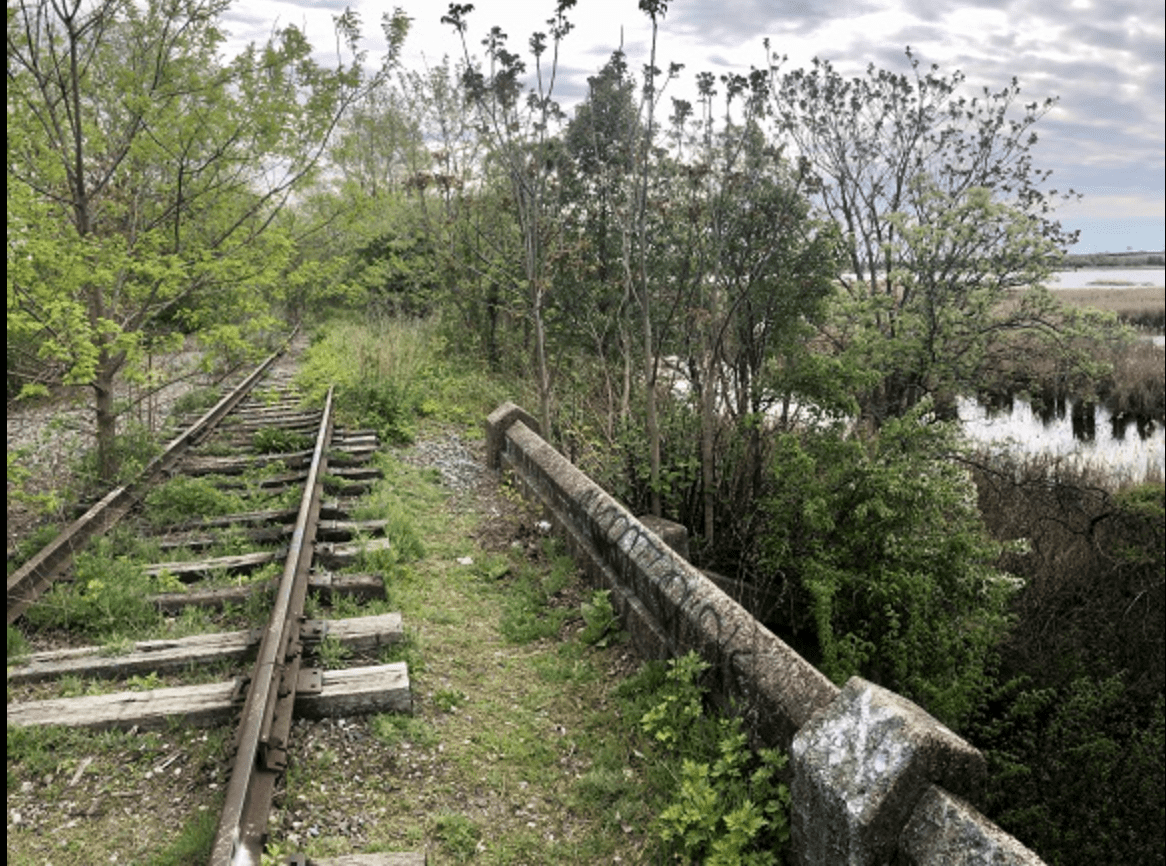States’ funding to create Greenway praised by Catholics as good stewardship of the earth
The proposed nine-mile Essex-Hudson Greenway from Montclair to Jersey City, which has had support from area Catholics, now has the financial backing of the state of New Jersey.
Gov. Phil Murphy announced on Sept. 15 that New Jersey had finalized the deal and purchased the property — an abandoned rail line running through Montclair, Glen Ridge, Bloomfield, Belleville, Newark, Kearny, Secaucus, and Jersey City — from Norfolk Southern. Murphy said that the $65 million state investment for the purchase and creation of the 135-acre park, which some are referring to as the Highline of New Jersey, will be the state’s largest conservation project to date.
At the announcement of the purchase, Murphy said New Jerseyans had not had equal access to green space and this project would change that.
“For far too long, many of New Jersey’s most diverse communities have not enjoyed equitable access to our state’s open spaces and their accompanying health benefits,” Murphy said. “While connecting these communities to our natural environment and economic opportunity, the greenway will also bolster resilience in one of the state’s most densely populated regions.”

The project was first proposed over a decade ago and is now presented by the Open Space Institute, the New Jersey Bike & Walk Coalition, and the September 11th National Memorial Trail Alliance. Residents living along the length of the linear park have been campaigning for more than 10 years to create a greenway that would serve as a “shared-use path” for people walking, riding a bicycle, running, rolling, or kayaking where it meets the wetlands.
Area Catholics, including the Archdiocese’s Environmental Task Force, have supported and advocated for the project to take 135 acres of blighted land throughout Essex and Hudson counties’ urban landscape and turn it into green space.
Father Timothy Graff, Director of the Social Concerns Office for the Archdiocese, cited three main reasons for Catholic support of the park: it represents good stewardship of the earth, it serves the common good, and it helps the marginalized.
The project also complies with Laudato Si,’ or Pope Francis’ appeal to “Care for Our Common Home.” In his encyclical letter, Pope Francis invites “every person living on this planet” to begin an inclusive dialogue about the future of Earth the planet. He calls on the Church and the world to acknowledge environmental challenges and work towards a new path.
Father Graff called the greenway proposal “a prime example of what Pope Francis calls for when asking the people of the world to be faithful stewards of God’s gift of creation.”
“The Greenway addresses the need for a focus on urban and overpopulated communities, including regions where green space and access to nature are not plentiful,” Father Graff said. “The Church also encourages support of the poor, and this project offers a multitude of benefits to so many poorer and more vulnerable people across the region.”
In June 2021, St. Lucy’s Church in Newark signed on as the 100th supporting organization to endorse the Essex-Hudson Greenway Project. St. Lucy’s is a prominent Catholic parish in Newark and home to the region’s significant number of Spanish-speaking Catholics. Its pastor, Father Paul Donohue, said that “projects that serve the community inspire many citizens.”
“The Essex-Hudson Greenway Project will benefit not only families and other citizens but all living beings – big and small – with whom we share this piece of good earth – Mother Earth – who supports us and our joy of life. This project re-establishes some harmony between people and ecosystems already supporting this area,” Father Donohue said. “In St. Lucy’s Church, we are ready to act seriously in favor of Mother Earth through the support of the Greenway Project.”
St. Lucy’s Parish liaisons Martha Henao-Paez and Genaro Perez promoted the project and obtained signatures to petition the state to pursue it.

The Fiscal Year 2023 budget agreement includes $20 million in federal American Rescue Plan funds to begin the remedial and structural work necessary to transform the abandoned rail line into a usable transportation corridor and recreational space. The entire line will remain closed to the public for an initial period of six to 12 months, after which the line will be opened to the public segment by segment as work on individual sections is completed over the next several years, according to the Murphy administration.
For more information about the Archdiocese of Newark’s Social Concerns Office, visit https://rcan.org/social-concerns/.
Editor’s note: Edna Lord of the Environmental Task Force of the Archdiocese of Newark contributed to this article.



